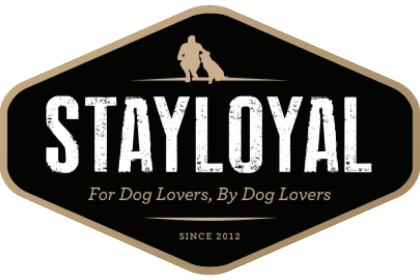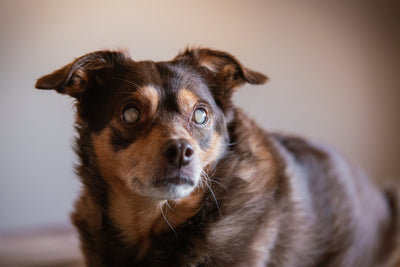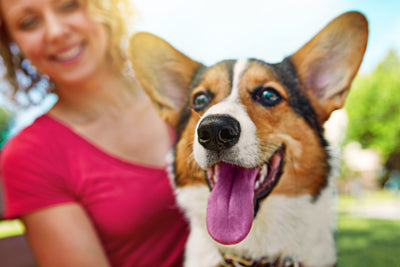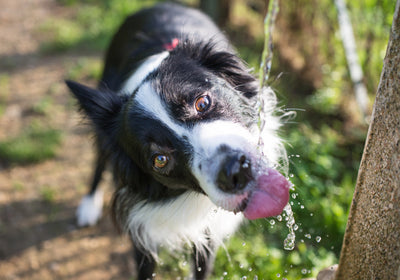Looking for a Running Buddy? Not All Breeds Are a Good Idea.

A dog can be a great workout buddy. They not only work as a reason to get out and do something active, they are non-judgmental and will never comment on your weight or how fast/far you go. Not to mention they are probably the cutest running buddy you will ever have!
BUT NOT ALL DOGS ARE CREATED EQUAL
This is especially true when it comes to their physical ability. While some breeds may have been bred for running (Greyhound) or sustained physical activity (border collie) other breeds were either never meant for much physical activity OR the breed has been changed over the generations to no longer be able to handle physical activity without serious health risks. If you are looking for a dog because you would like someone to motivate you to exercise five days a week, be sure to do your research and pick out a breed that will be able to handle that kind of exercise. Here are some breeds/breed types that you should NOT choose
Brachycephalic Dog Breeds
Any dog breed with a short-nose cannot breathe properly. When they exert themselves, this problem is exacerbated. They also don’t do well in heat, which means that in the warmer months physical activity can cause a problem quickly. While they may be fine with playing in the backyard for a bit or even a brisk walk around the block (you want to keep them in shape after all!), they are not a buddy for the marathon runner. These breeds include: English Bulldogs, Boston Terriers, Pugs, Brussels Griffons, Affenpinschers, Cavalier King Charles Spaniels, Bulldogs (of any type), etc. Other breeds that are also put under this category are the Boxer, Cane Corso and Bullmastiff. Depending on the individual, some of these dogs are not as “short-nosed” as others and may be able to handle more physical activity. However, warm weather will still pose a problem and you should definitely watch for signs that your dog is having trouble breathing.
Bad Conformation
Regardless of what breed you are looking into, a dog with bad conformation will be much more likely to develop issues from consistent, strenuous exercise. So whether you are looking at puppies or rescue dogs, make sure the dog you are looking at has the build for running. Dogs with spinal deformities, crooked legs, short necks, or any type of face structure that inhibits proper breathing are not good choices for a running buddy.
In the same vein, some dog breeds are more prone to problems with hip dysplasia and other joint issues including arthritis. This includes a lot of bigger breeds such as Great Danes, Saint Bernards, Rottweilers, and German Shepherds, to name a few. German Shepherds love activity, but that doesn’t mean the level of activity he can do is the same as you. Depending on the individual dog and its breeding, they can be known for having serious hip issues and a German Shepherd that is made to run five days a week for miles and miles may end up costing you a lot at the vet as he ages.
If you are choosing a puppy, ask the breeder whether they get their breeding dogs’ hips checked and what percentage of their puppies end up developing joint issues. Since many of these are hereditary, it’s best to stay away from lines with known issues. For breeds like the German Shepherd, look for the European lines. They have less slope in the back than the American lines and better overall conformation, making them less likely to develop joint issues.
The Little Dog Dilemma
Another thing to think about when picking a jogging buddy is the size of the dog. Yes, little dogs are easier to run with because they are much less likely to pull you off your feet, even if you don’t spend a lot of time training them to heel. (They can trip you more easily!) Small dog breeds such as the Chihuahua, Italian Greyhound, Jack Russel Terrier, etc., have lots of energy and a body built for running. However, they too can have joint issues and have thin legs that can easily get injured. For these reasons, they may not be good for the cross-country runner going over rough terrain. In addition, think about how many running steps they have to take for one of yours – they are going to tire out sooner than a bigger dog with a longer stride. That’s something to take into consideration as well.
Before you chose a dog to be your next workout partner, the most important thing is to think about your goals and the type(s) of physical activity you want your dog to share with you. Think about:
Terrain – lots of hills, rocky/uneven path, deep sand and/or flat grass?
Distance – do you just want to jog around a couple blocks or train for a marathon?
Speed – slow and steady or speedy?
Temperature – do you live somewhere that gets really warm? Really cold? Are you still planning on exercising in the cold or heat?
Frequency – are you running every day? Twice a week? Remember, just like us, it’s easier on the dog if you do the exercise regularly so they stay in shape. Infrequent exercise will put your dog more at risk for injury (and yourself!)
Asking yourself these questions can help you determine what breed of dog may be the best partner for you. And, no matter what breed you end up with, be sure you watch your best friend for signs of overheating or overexertion and don’t run a puppy excessively – especially a large breed – until their bones are fully developed as this will cause problems later. Doing your research will help ensure you and your new buddy travel happily down the trail.








